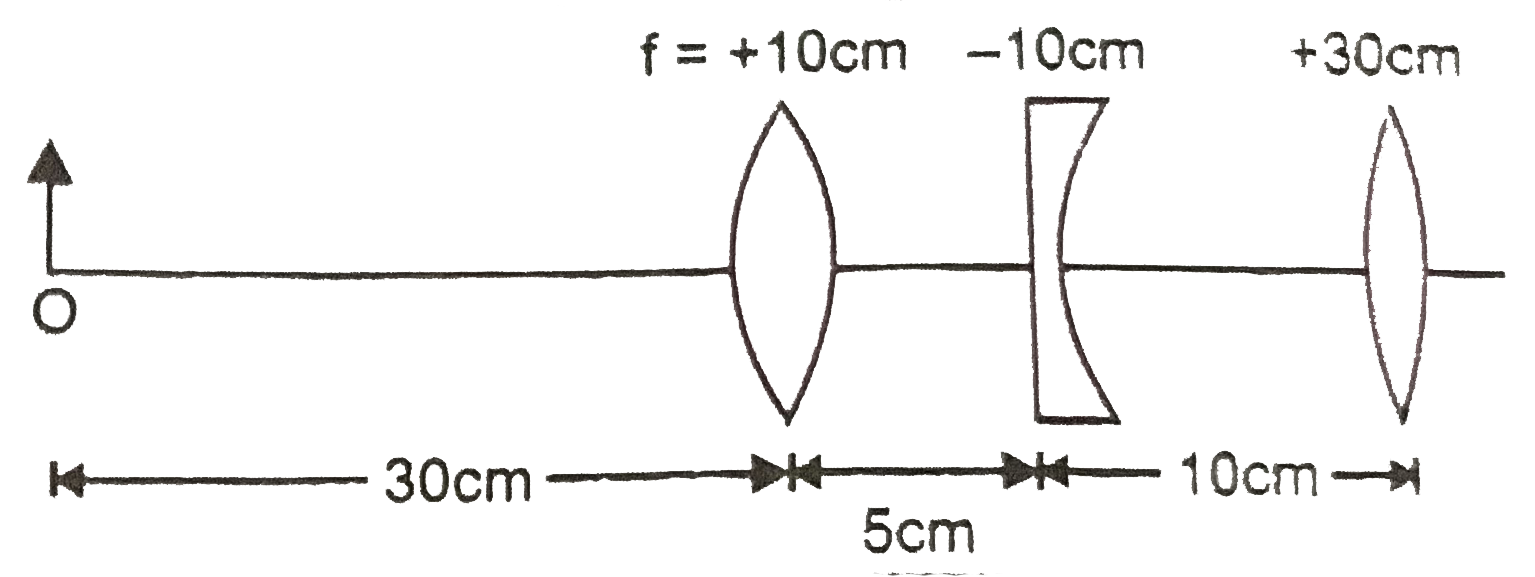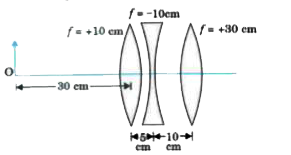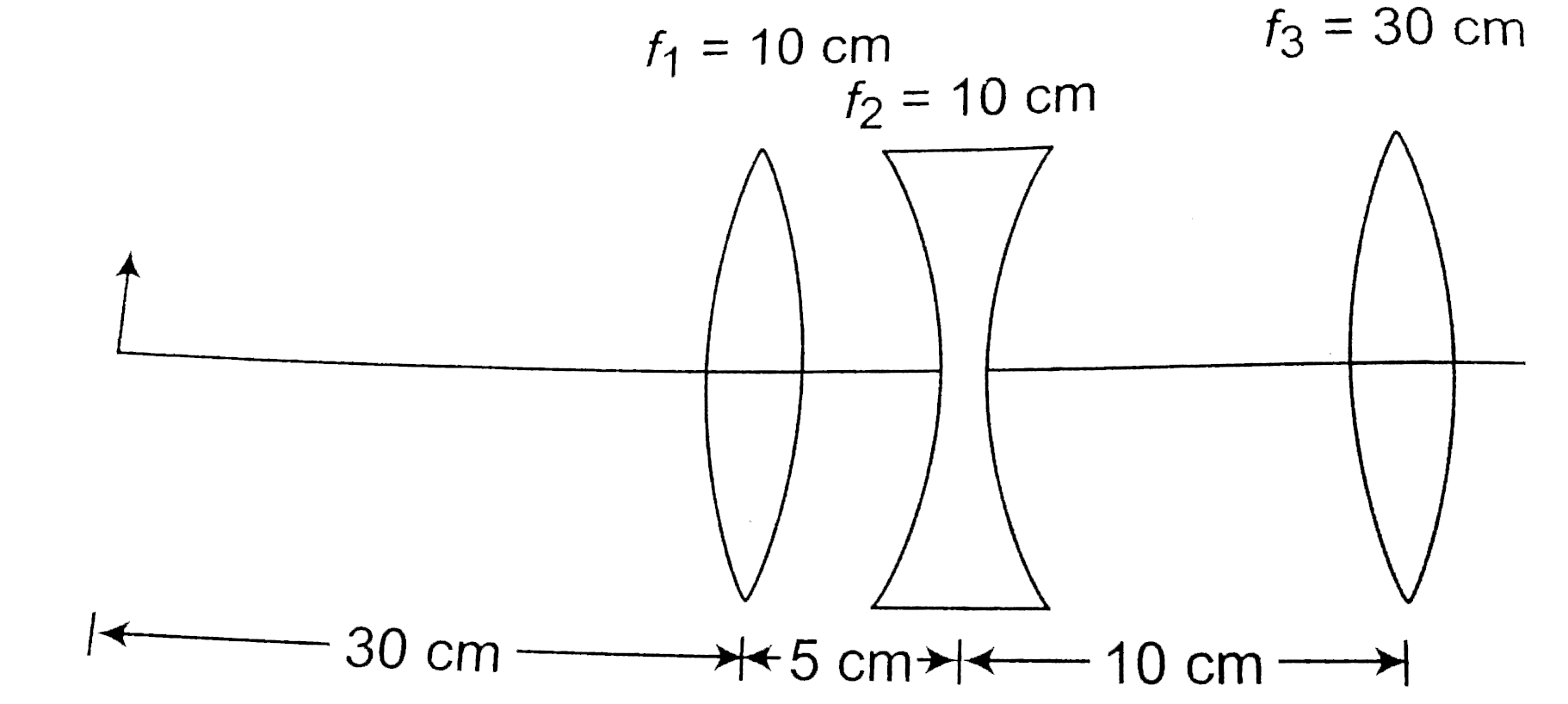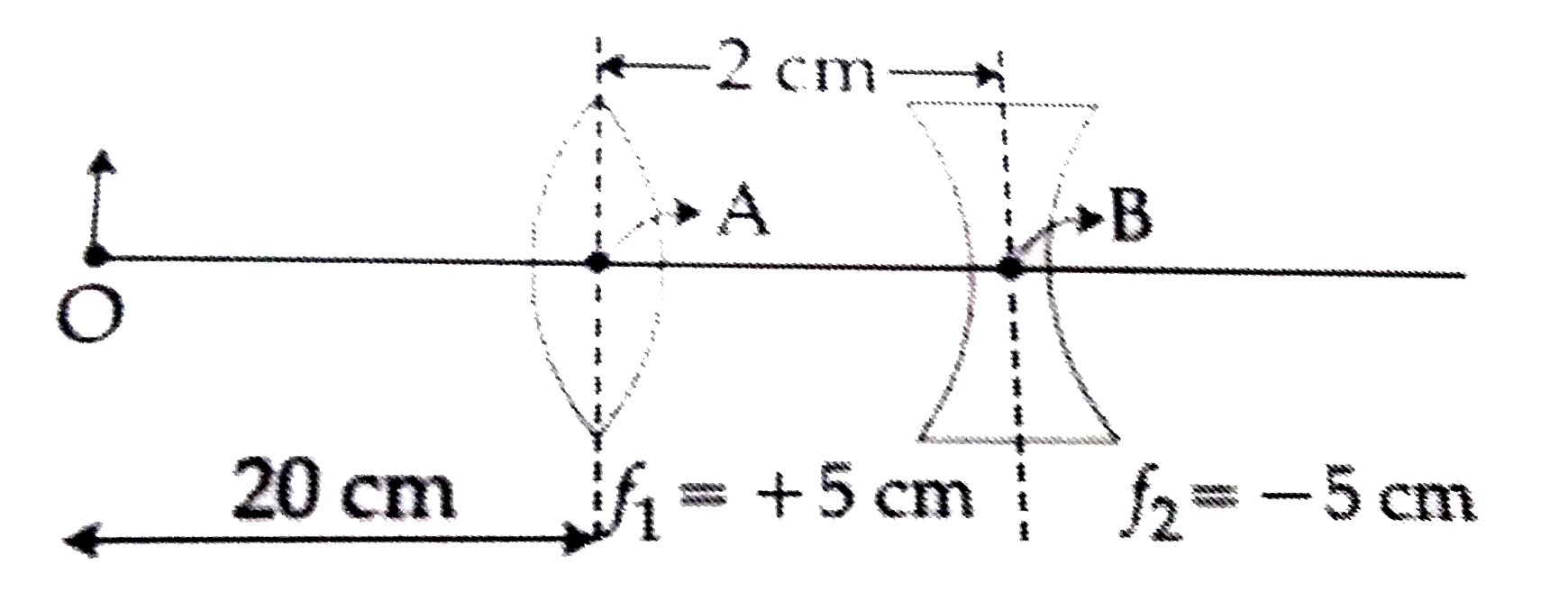Find the position of the image formed by the lens combination given in Fig.
 .
.
Image formed by the first lens
1v1−1u1=1f1
1v1−1−30=110
or v1=15cm
The image formed by the first lens serves as the object for the second. This is at a distance of (15-6) cm =10 cm to the right of the second lens. Though the image is real, it serves as a virtual object for the second lens, which means that the rays appear to come from it for the second lens.
1v2=110=1−10
or v2=∞
The virtual image is formed at an infinite distance to the left of the second lens. This acts as an object for the third lens.
1v3=1u3=1f3
or 1v3=1∞+130
or v3=30cm
The final image is formed 30 cm to the right of the third lens.
Topper's Solved these Questions
- RAY OPTICS AND OPTICAL INSTRUMENTSBOOK - NCERT ENGLISHCHAPTER - RAY OPTICS AND OPTICAL INSTRUMENTSEXERCISE - Exercise
32 Videos
- NUCLEIBOOK - NCERT ENGLISHCHAPTER - NUCLEIEXERCISE - Exercise
31 Videos
- SEMICONDUCTOR ELECTRONICS MATERIALS DEVICES AND SIMPLE CIRCUITSBOOK - NCERT ENGLISHCHAPTER - SEMICONDUCTOR ELECTRONICS MATERIALS DEVICES AND SIMPLE CIRCUITSEXERCISE - Exercise
15 Videos
Similar Questions
Find the position of the image formed by the lens combination given in the following figure :

View SolutionA convex lens of focal length 20cm is placed coaxilly with a convex mirror of radius of curvature 20 cm. The two are kept 15 cm apart. A point object is placed 40 cm in front of the convex lens. Find the position of the image formed by this combination. Draw the ray diagram showing the image formation.
View Solution
Knowledge Check

The position of fical image formed by the given lens combination from the third lens will be at a distance of f1=+10cm,f2=−10cm,f3=+30A15 cm, concaveBinfinityC45 cmD30 cm
A convex lens of focal length 20cm is placed coaxilly with a convex mirror of radius of curvature 20 cm. The two are kept 15 cm apart. A point object is placed 40 cm in front of the convex lens. Find the position of the image formed by this combination. Draw the ray diagram showing the image formation.
View Solutionwhat is the position and nature of image formed by lens combination shown in figure ? (f1,f2 are focal lengths)

View Solutionwhat is the position and nature of image formed by lens combination shown in figure ? (f1,f2 are focal lengths)

View SolutionTwo lens of power +15Dand−5D are in contact with each other. What is the focal length of the combination ? What would be the position of image formed by the combination for an object at 30cm ?
View SolutionA convex lens is placed over a plane mirror. A pin is now positioned so that there is no parallax between the pin and its image formed by this lens-mirror combination. How can this observation be used to find the focal length of the convex lens? Give appropriate reasons in support of your answer.
View SolutionA convex lens of focal length 10 cm is placed coaxially 5 cm away from a concave lens of focal length 10 cm. If an object is placed 30 cm in front of the convex lens, find the position of the final image formed by the combined system.
View SolutionA convex lens of focal length 10 cm is placed coaxially 5 cm away from a concave lens of focal length 10 cm. If an object is placed 30 cm in front of the convex lens, find the position of the final image formed by the combined system.
View Solution
